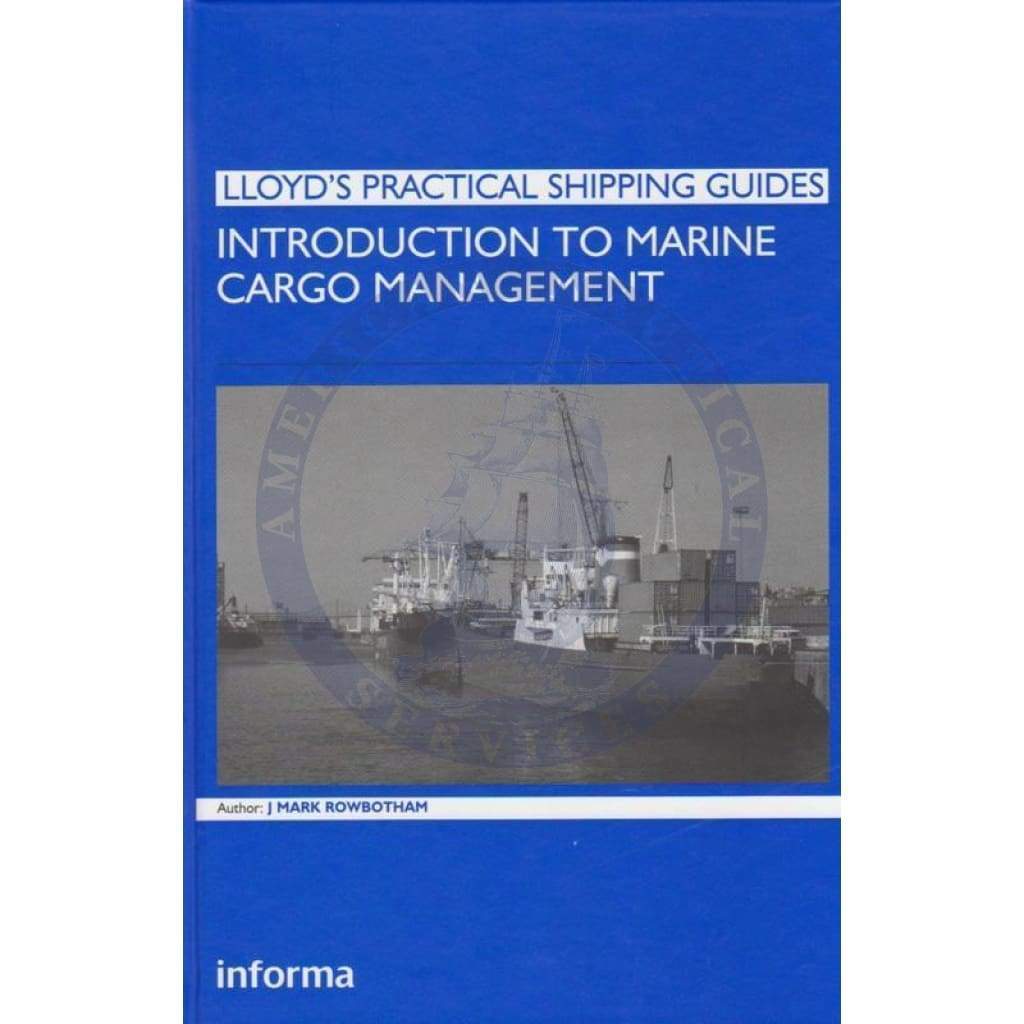Introduction to Marine Cargo Management deals with a wide variety of subject areas relating to the maritime movement of goods, from the nature of cargo vessels and containerisation, global maritime organisations, through the use of international terms of delivery and freight costs, to the means and methods of developing strategies for greater efficiency in the international maritime movement of goods.
PART 1 – THE MARITIME SECTOR
PART II – THE CARRIAGE OF GOODS BY SEA
PART III – AWARENESS, VIGILANCE & COMPLIANCE
Table of Contents:-
Introduction
PART 1 – THE MARITIME SECTOR
Chapter 1 – Overview of the UNCLOS
Chapter 2 – Vessel Traffic Monitoring
Chapter 3 – Types of Marine Cargo Traffic
PART II – THE CARRIAGE OF GOODS BY SEA
Chapter 4 – Types of Cargo Vessel
Chapter 5 – The Nature of Cargoes
Chapter 6 – The History of Containerisation
Chapter 7 – Chartering
Chapter 8 – The INCOTERMS
Chapter 9 – Maritime Organisations
Chapter 10 – The Shipping Organisation & Shipping Process
Chapter 11 – Intermodalism
Chapter 12 – Maritime Cargo Legislation
Chapter 13 – Shipping Costs
Chapter 14 – Ro-Ro Shipments
Chapter 15 – Freight Documentation
Chapter 16 – Marine Insurance
Chapter 17 – The Influence of Payment Terms on Marine Cargo Documentation
Chapter 18 – Customs Maritime Cargo Reporting & Controls
Chapter 19 – Multimodal Information and the International Supply Chain
Chapter 20 – The Cargo Documentary Approach
Chapter 21 – The Duty of Disclosure, Dangerous Goods and Port information
Chapter 22 – Cargo Stowage and Loading
Chapter 23 – The IMO FAL Convention and the ISPS Code
Chapter 24 – A View from the Bridge, A View from the Shore, and the Role of the Shipping Agency
Chapter 25 – The Short Sea Sector and the Marine Motorway
Chapter 26 – Perceived Anomalies in Marine Reporting
Chapter 27 – Automatic Identification System (AIS)
PART III – AWARENESS, VIGILANCE & COMPLIANCE
Chapter 28 – The Audit Trail
Chapter 29 – ISO 28000/28001 and Six Sigma
Chapter 30 – Documentary and Procedural Requirements







